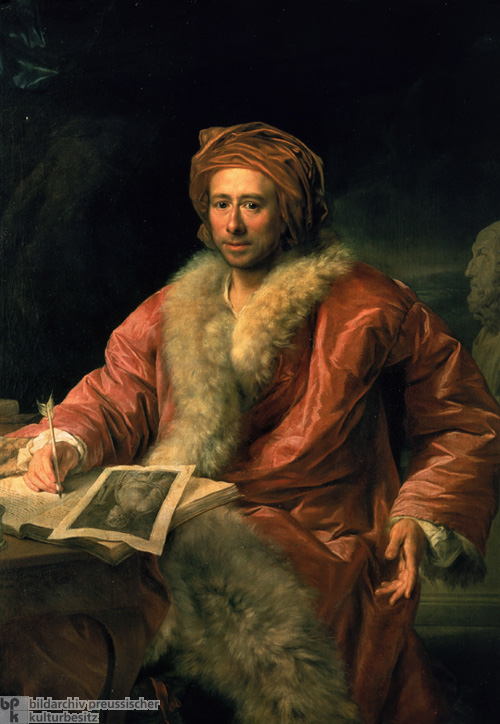|
Johann Joachim Winckelmann (1768)
The art and culture of German-speaking Europe underwent great change in the mid-eighteenth century, when Baroque architecture based on French and Italian models and French-influenced literature and philosophy were transformed by new currents that sought their inspiration in classical antiquity. One of the major figures in this shift to "Classicism" was the German archaeologist, librarian, and philologist Johann Joachim Winckelmann (1717-68), whose understanding of ancient Greek art had a significant impact on the literary and philosophical movements of the late eighteenth century. In his major works, such as Gedanken über die Nachahmung der griechischen Wercke in der Malerey und Bildhauer-Kunst [Thoughts on the Imitation of Greek Works in Painting and Sculpture] (1755) and Geschichte der Kunst des Alterthums [History of the Art of Antiquity] (1764), Winckelmann not only founded both scientific archaeology and modern art history, but also established an idea that exercised a firm hold on future generations – namely, that classical learning was essential to the effective cultivation of the higher self [Bildung]. Painting by Anton von Maron (1733-1808), 1768.

|


